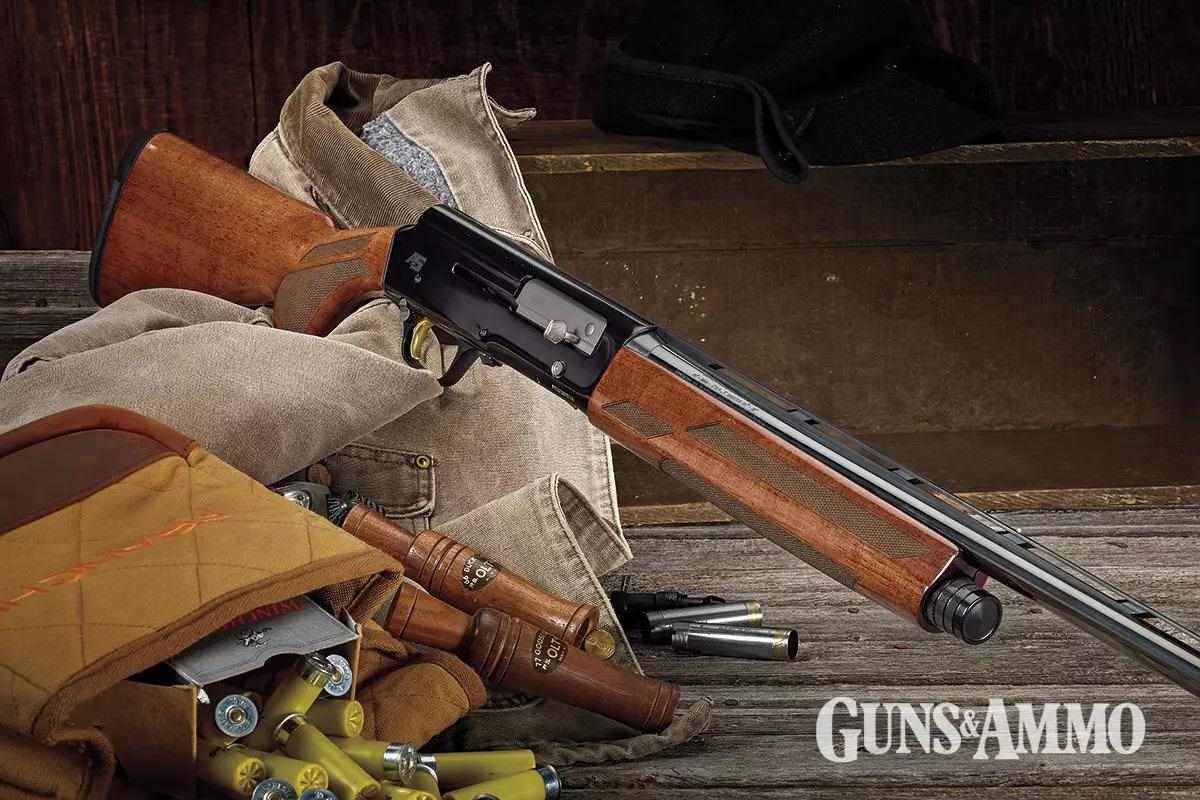Affiliate Disclosure: This page contains affiliate links. We earn from qualifying purchases.
The late Col. Charles Askins, a longtime Guns & Ammo contributor, courted controversy by asserting in an article that ”you only need the 12 gauge.” He then undercut his own argument by describing notable hunting feats performed with all the other gauges. Each vignette finished with Askins acknowledging the accomplishment but still claiming there was no need for anything other than the trusty 12. This was all for literary effect, and was far more interesting and amusing than just pointing out that all the gauges have their own advantages.
If that was true in the 1980s, it’s even more true now, thanks to advancements in ammo technology that have rendered the smaller gauges much more effective and flexible. The 12 gauge is still king. If we refer to Federal’s shotshell offerings, there are 218 varieties of 12-gauge shells, but the 20 gauge is well-served with 77, and the .410 bore with a surprising 21. The 28 gauge comes in 18 flavors: The 16 has 17, the 10 gauge has 10 variants, and the 24 and 32 gauges have one apiece.
It would be pushing it to claim a 20 gauge can do everything a 12 can, but saboted slugs, trick wads and a variety of exotic shot offerings unimagined in Askins’ time have closed the gap. The 20 gauge has always been popular for upland birds, but today’s ammo makes it a logical choice for deer, turkey and most waterfowl, too. With that in mind, Browning now offers a 20-gauge version of its A5 Hunter autoloader that takes full advantage of the smallbore load in compact size, light weight and snappy handling.
Advertisement
Similar, But Different…
In a time when Disney can render “Snow White” as a 21st-century girlboss, the concept of mining and repurposing one’s intellectual property is almost irresistible. The Browning Auto-5 (1902-1998) established the autoloading shotgun, and its long-recoil operating system dominated for decades. So, it’s not a shock that, in 2012, Browning applied the A5 — not “A-5” — moniker to a new design that superficially resembles the classic self-stuffer but has an entirely different mode of operation. Browning styled the name “Kinematic Drive,” but the fundamental concept will be familiar to anyone familiar with Benelli or the dozens of guns that have copied its inertia-based recoil operating system. It was a bit of an oddity when it appeared in a Benelli about 35 years ago, but its advantages are simplicity, reliability and flexibility with a variety of potential ammo choices, making it the dominant choice for many shooters. The holdouts are those who disdain the snappier recoil and cling to the smoother-shooting, gas-operated designs.

Two important advantages of the Kinematic Drive system are that it allows a slim forend, since there are no moving parts between it and the magazine tube, and reduced weight, in part for the same reason.
Browning’s 20-gauge A5 Hunter was new for 2024, winning Guns & Ammo’s Shotgun of the Year award. It took full advantage of the benefits of the Kinematic Drive system, getting weight down to a feathery 5½ pounds. There have been a few other shotguns in this weight range; the Benelli Ethos 28-gauge comes to mind, as well as sundry French and Italian over-unders with aluminum and aluminum/titanium frames.
Advertisement
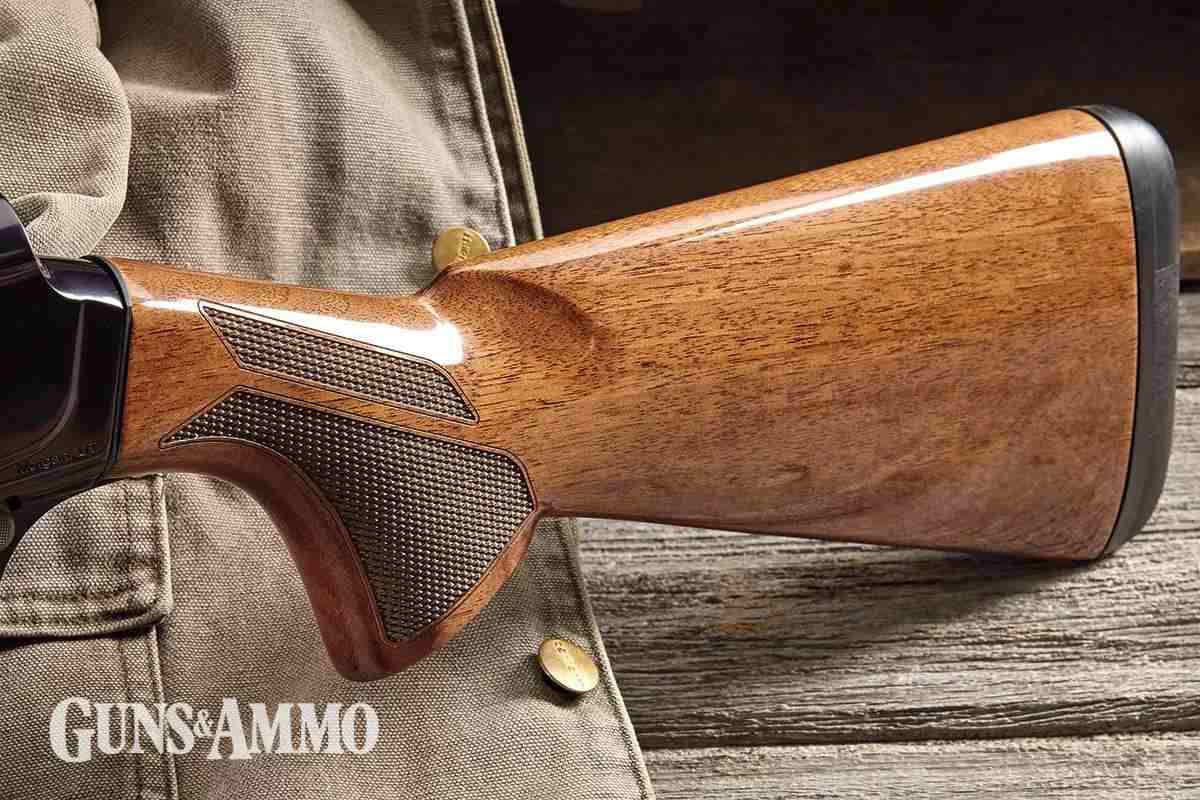
If you grew up in a world where 7 pounds was the standard weight of a shotgun, your first encounter with one that’s a pound-and-a-half lighter is almost alarming! You think it has to be muzzle-light, but the A5 Compact balances just behind the bolt release button. The more you handle it, the more natural it feels.
The A5 retains the humpback receiver profile of its distinguished ancestor, though the hump is not so pronounced. Browning has — since the days when the Auto-5 was king — touted the longer sighting plane offered by the humpback design. That campaign is continued here. My attitude is that if you’re noticing the sighting plane, you’re not focused on the target. If you think it helps, product choice is what makes America great.
The Action
The receiver is a polished, black anodized aluminum. Most important is that it was scaled down from the existing 12- and 16-gauge versions. The A5 Compact has a circumference that measures 7 inches, which is the same measurement as the Remington 1100 in 12 gauge.
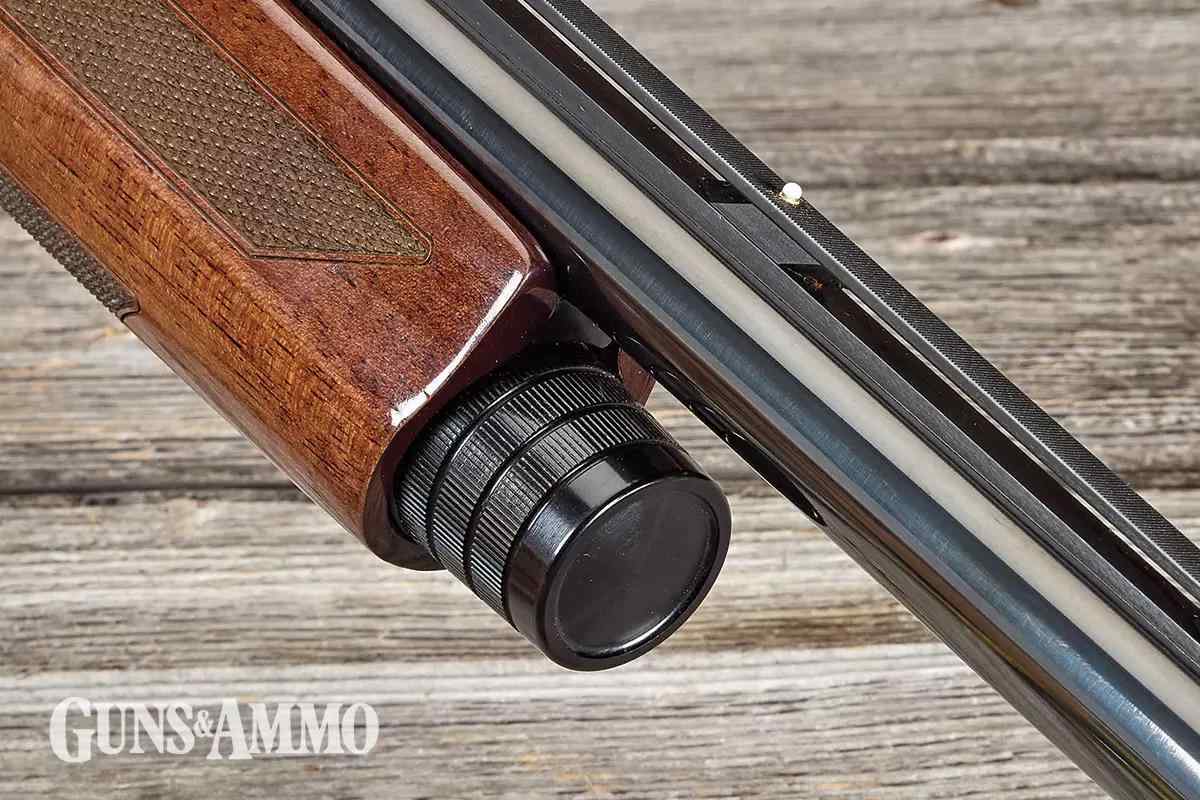
A pair of hex socket screws in the top left side retain a steel guide bar inside the receiver, which also incorporates the spring-loaded ejector. These screws leave something to be desired aesthetically, but the alternative is probably a lot more expensive.
A pair of .175-inch pins retain the trigger assembly. These are easy to drive out for disassembly. The triggerguard opening swells toward the front to give plenty of room for a gloved finger.
A generously sized safety button at the rear of the guard blocks the gold-colored trigger when pressed left to right. This can be reversed for the convenience of left-handers by removing the detent and spring from a recess in the right side of the trigger assembly, moving them to an identical feature on the left side and replacing the safety button with the red stripe on the right side. Browning recommends this process be done by a certified gunsmith or by returning the gun to its service center. I would say that’s a good idea, given the minuscule size of the parts in question.
At the front of the triggerguard is the bolt-latch button. This is not to be confused with the bolt-release button, which is on the left front of the receiver. The bolt-release button works exactly as it does in any other autoloader you’re probably used to; push it in to allow the bolt assembly to move forward into battery. The latch button most commonly comes into play when the magazine is empty and the hammer cocked. In that condition, you can pull the bolt handle back all you like, but the bolt assembly will not latch. Pulling the bolt-latch button rearward allows the bolt to latch in its retracted position, allowing one to eject a loaded round without feeding another from the magazine. When you’re ready to reload, pull back on the bolt latch to release a shell from the magazine. You then can chamber it by retracting and releasing the bolt.
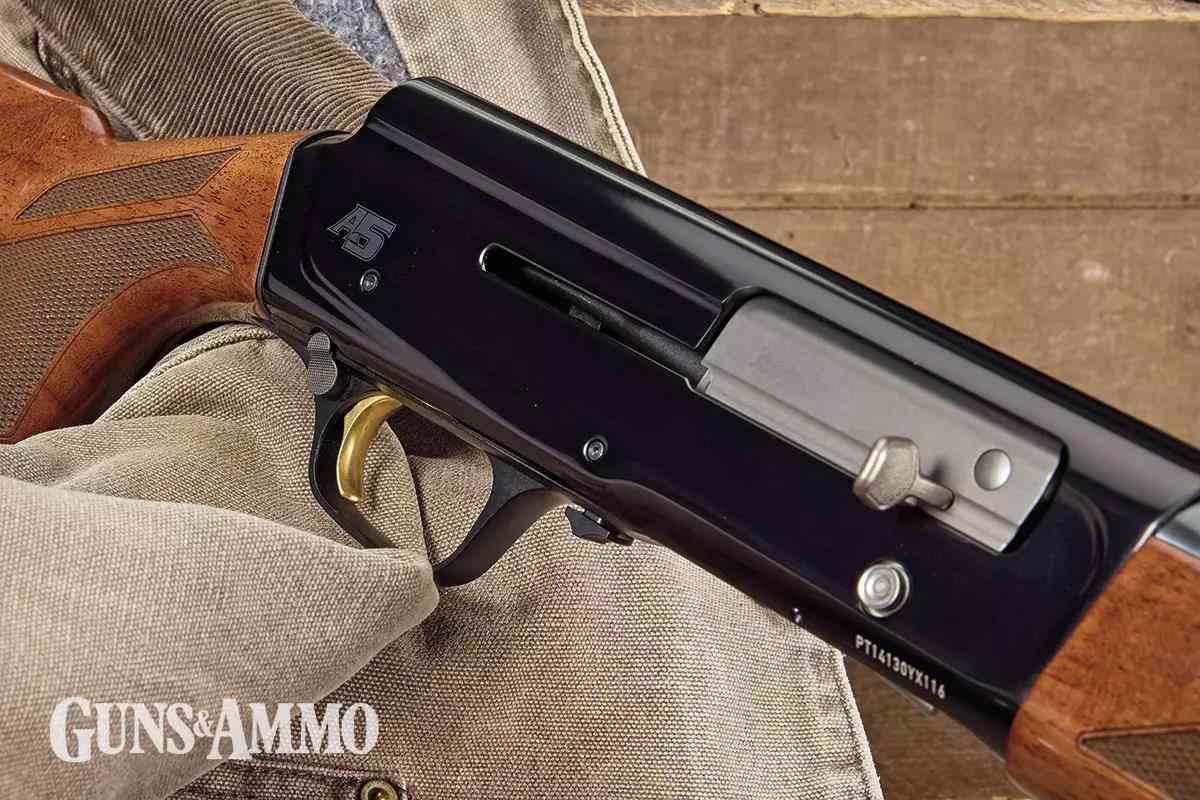
The A5 continues the Browning tradition of its SpeedFeed. With the magazine empty and the bolt locked back, a shell inserted in the magazine will be immediately conveyed onto the lifter and then into the chamber as the bolt closes. John Browning’s son, Val, is credited with inventing what is now referred to as “speed loading,” and was awarded a patent for it in 1952. The feature appears on several Browning shotguns.
A Barrel of Fun
The chamber and barrel are chrome-lined for corrosion resistance, and back-bored to .626-inch inside diameter. This is in contrast to the nominal 20-gauge figure of .617 inch. Back-boring is a concept that got its start in trapshooting, but has spread to hunting guns as well — except in Italy. Italians have been resistant to the idea.
A barrel that is slightly oversized, goes the thinking, will produce reduced recoil and shot deformation, yielding a more comfortable shooting experience and better patterns.
Browning is touting the A5 20-gauge as primarily a hunting gun, and so it provides this gun with three Invector DS flush choke tubes rather than the five extended tubes that accompany a shotgun with sporting pretensions.
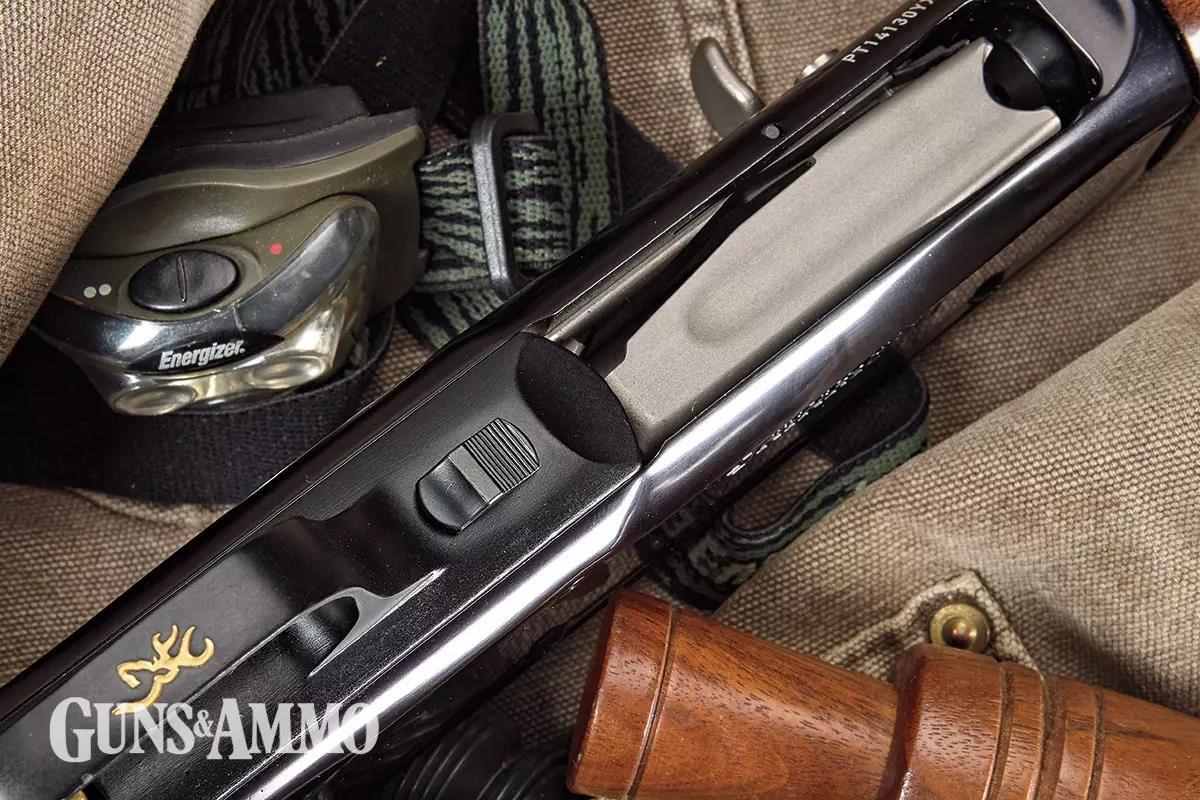
The tubes are 2¾ inches long and threaded at the muzzle. At the other end is a bronze Double Seal (thus the “DS”), which helps prevent powder residue from getting between the tube and bore. This keeps the tube easy to turn after long shooting sessions.
The tube bore has a long cone with a short half-inch parallel at the muzzle end. The long cone provides a gradual choking action, while the parallel section helps stabilize the wad before it leaves the muzzle.
The early choke tubes required a bulbous bulge at the muzzle, but there’s little to see here. The barrel’s exterior diameter expands only from .755 inch to .778 inch, and you really have to squint to perceive it.
A 6mm untapered rib with a .1-inch red fiber-optic bead and .08-inch white mid-bead top the barrel, and the rib has an interesting double-decker configuration at the breech end that peters out after the fourth support.
This section would have been solid in a lot of guns, but the weight-saving mandate, which extends here as far as an aluminum magazine cap, called for something more unusual.
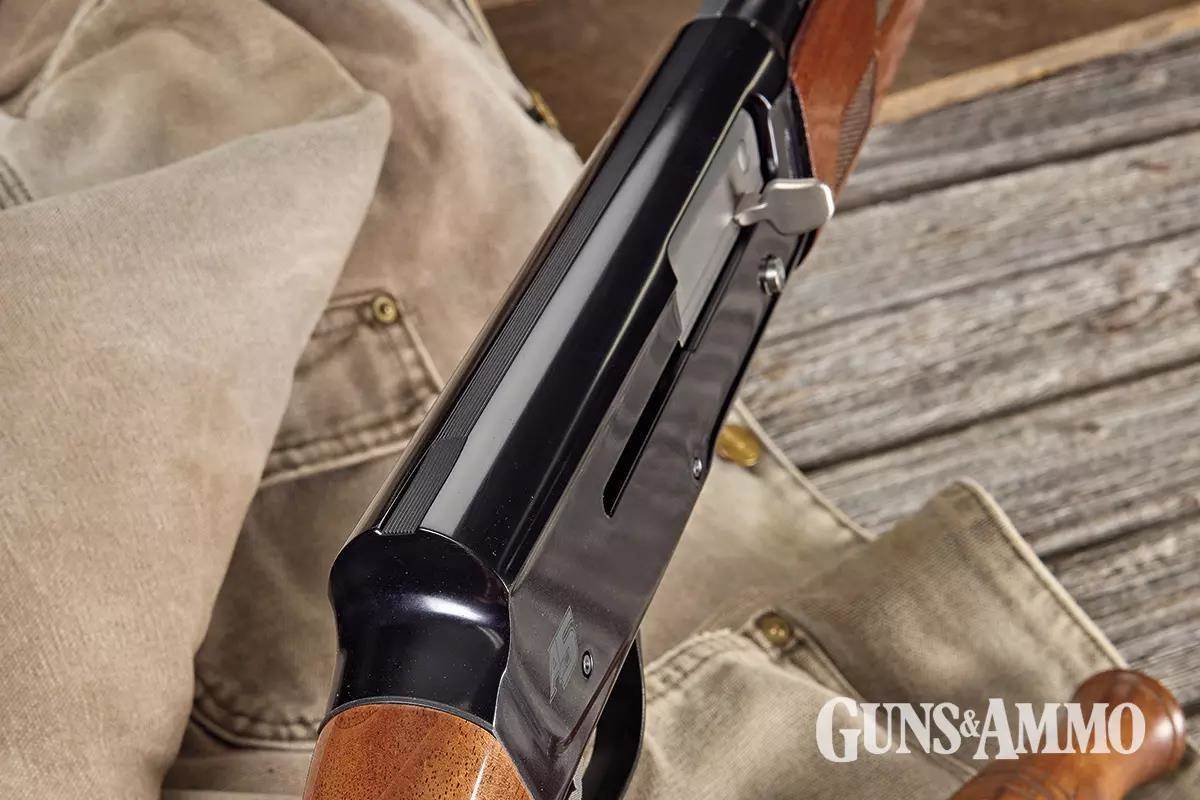
Speaking of the magazine tube, you can easily install or uninstall the plug that limits magazine capacity to two by turning it 90 degrees with a slotted screwdriver and passing it through the magazine spring keeper.
Taking Stock
The Turkish walnut stock is ornamented with 18-lines-per-inch (lpi) checkering in a bordered trapezoidal pattern. Browning is defying the craze for camouflaged shotguns here with a high-gloss finish on both wood and metal; I found it refreshing. The pistol grip has modest palm swells on both sides. A black Inflex II recoil pad caps the butt.
No manufacturer would dare these days to offer a shotgun in the A5’s price range without the means for the customer to custom-fit it. Browning provides a comprehensive assortment of shims and spacers for buttstock adjustment. Quarter-inch and half-inch spacers allow you to extend the A5’s pull length from the factory 14¼ inches to a full 15. There’s a neutral shim installed at the factory, but you can install Shim 1 to raise the comb about one-sixteenth-of-an-inch and the heel one-eighth inch. If your neck is more swanlike, you can use Shim 3 to lower the comb one-sixteenth inch and the heel one-eigth inch.
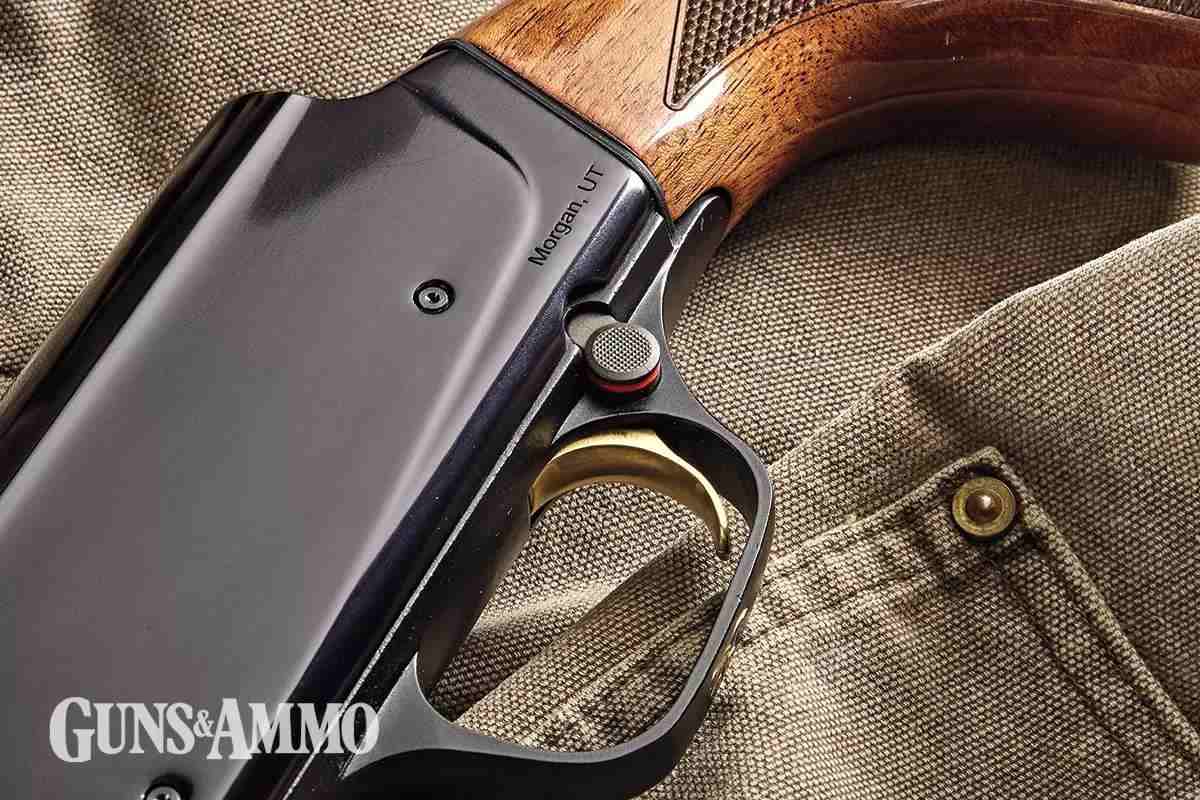
Three additional shims regulate drop in the same way, but offer one-eighth-inch cast-on or -off, depending on the orientation. These are wedge-shaped when viewed from above; install with the thin edge facing the direction you wish the butt to go.
The process is quick and easy. Use a three-sixteenth-inch Philips screwdriver to turn out the recoil pad screws. Lubricate the screwdriver a bit to keep it from tearing the rubber. The fasteners are machine screws that engage threaded inserts in the stock. This is the right system when the recoil pad may often be removed and replaced.
Use the usual 13mm deep-hole socket to turn off the throughbolt nut — no extension required here — and pull the stock off the throughbolt. Remove and replace the shim and reverse the process with the buttstock. Given the right tools, this process takes minutes, meaning you have little excuse not to experiment with the shim kit.
Disassembly is a snap. Since the operating handle serves no other function than retracting the bolt, you can remove it with the bolt in battery. Turn off the magazine cap and pull the barrel and forend off the magazine tube as an assembly. Pull out the operating handle, allowing the bolt assembly to slide out the front of the receiver. Unless the trigger assembly needs attention, you’re finished.
Pattern Testing
I pattern-tested the A5 Hunter and function-fired it on clay targets with both steel and lead shot target ammunition. There were no failures of any kind. Since Browning promotes the A5 Hunter in 20 gauge as an all-around hunting shotgun, I patterned it with Federal Black Cloud waterfowl ammunition with No. 1 shot.

Black Cloud has been around since 2007. Today, the load combines 60-percent polished steel shot and 40-percent Flitestopper shot. These are contained in the Flitecontrol Flex wad, which has petals at the rear and vents at the side to, according to Federal, “stimulate the payload for separation from the wad at the ideal moment for dense, deadly patterns.” It sounds impressive, and the results at the pattern board were too. We found wads tended to drop about 3 yards short of the 40-yard target.
Some of my grimmest experiences with recoil have been shooting straight-gripped English-style 3-inch 20-gauges, so I approached shooting the Black Cloud loads with some caution. That proved unnecessary. Recoil was, to quote Askins again, “soft as a maiden’s kiss.” Well, not that soft, but a morning’s ducking, especially in winter clothing, would leave you completely unscathed.
Browning claims the A5 Hunter in 20 gauge shoots flat, delivering patterns 50 percent above and below the point of aim. I’d only issue that guidance with the proviso, “Your results may vary.” A shotgun’s point of impact depends on where your eye is located since the eye is the rear sight of a shotgun. Impact will vary whether you are gaunt or chubby-cheeked; whether you crawl up the stock or relax farther back; how firmly you hold the gun; whether you’re muscular or corpulent, and so on.
For me, the A5 shot about 8 inches high at 40 yards, which I found to be no problem. If you find it a problem, recourse to the supplied shims and spacers to adjust the impact to suit.

Other ultra-light autoloaders I’ve tried have been muzzle-light and provided a whippy, wand-like feel. In contrast, the A5 seemed perfectly balanced and hits came immediately. As with any lightweight gun, you can’t count on a lot of momentum to keep you swinging through the target; you need to keep pushing and directing the muzzle.
I expected the A5 Hunter in 20 gauge to be a specialist’s gun, suitable only for experienced shooters, and for particular sports such as grouse hunting where keeping weight to a minimum is vital. That’s not the case, I think. Shooters of all skill levels will be able to hit with it. There’s no reason to think recoil will be too much for younger or smaller shooters.
This A5 Hunter in 20 gauge is more likely to interest those who already have many shotguns, but I wouldn’t hesitate to recommend it as a “one gun” for almost anyone.
Browning A5 Hunter 20 Gauge
- Type: Short recoil operated, semiautomatic
- Gauge: 20
- Barrel: 26 in. or 28 in. (tested)
- Overall Length: 49.25 in.
- Length of Pull: 14.25 in.
- Drop at heel: 2 in.
- Drop at comb: 1.75 in.
- Stock: Turkish walnut, Grade 1
- Receiver: Aluminum alloy
- Finish: Anodized (receiver), chrome-plated (chamber), gold plated (trigger), gloss blue barrel
- Sights: Fiber optic (front)
- Trigger: 5 lbs., 13.5 oz. (tested)
- Safety: Two-position crossbolt
- Accessories: Hard case; choke tubes with spanner: IC (.621 in.), M (.614 in.), F (.602 in.); shims and spacers for stock adjustment
- MSRP: $2,019
- Manufacturer: Browning Viana-Fabrica De Armas E Artigos De Desporto, S.A., Neiva, Portugal
- Importer: Browning, 800-333-3288, browning.com
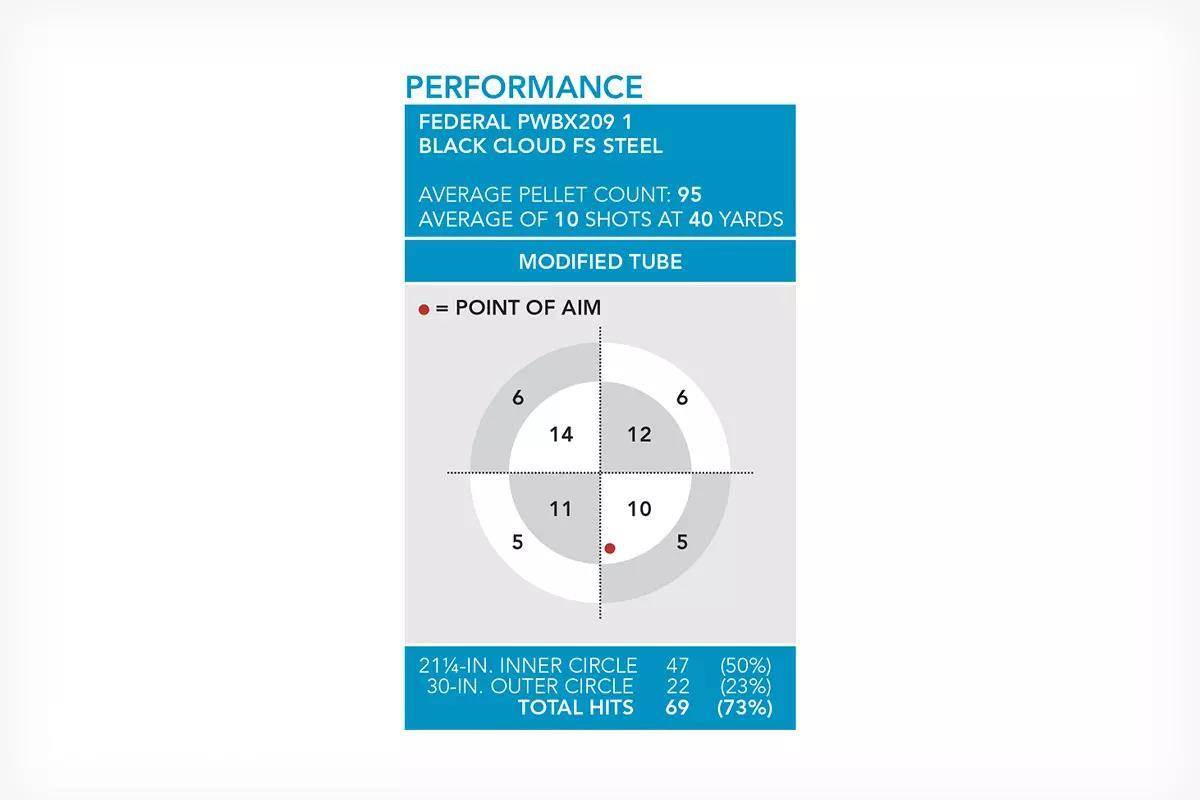
Read the full article here


